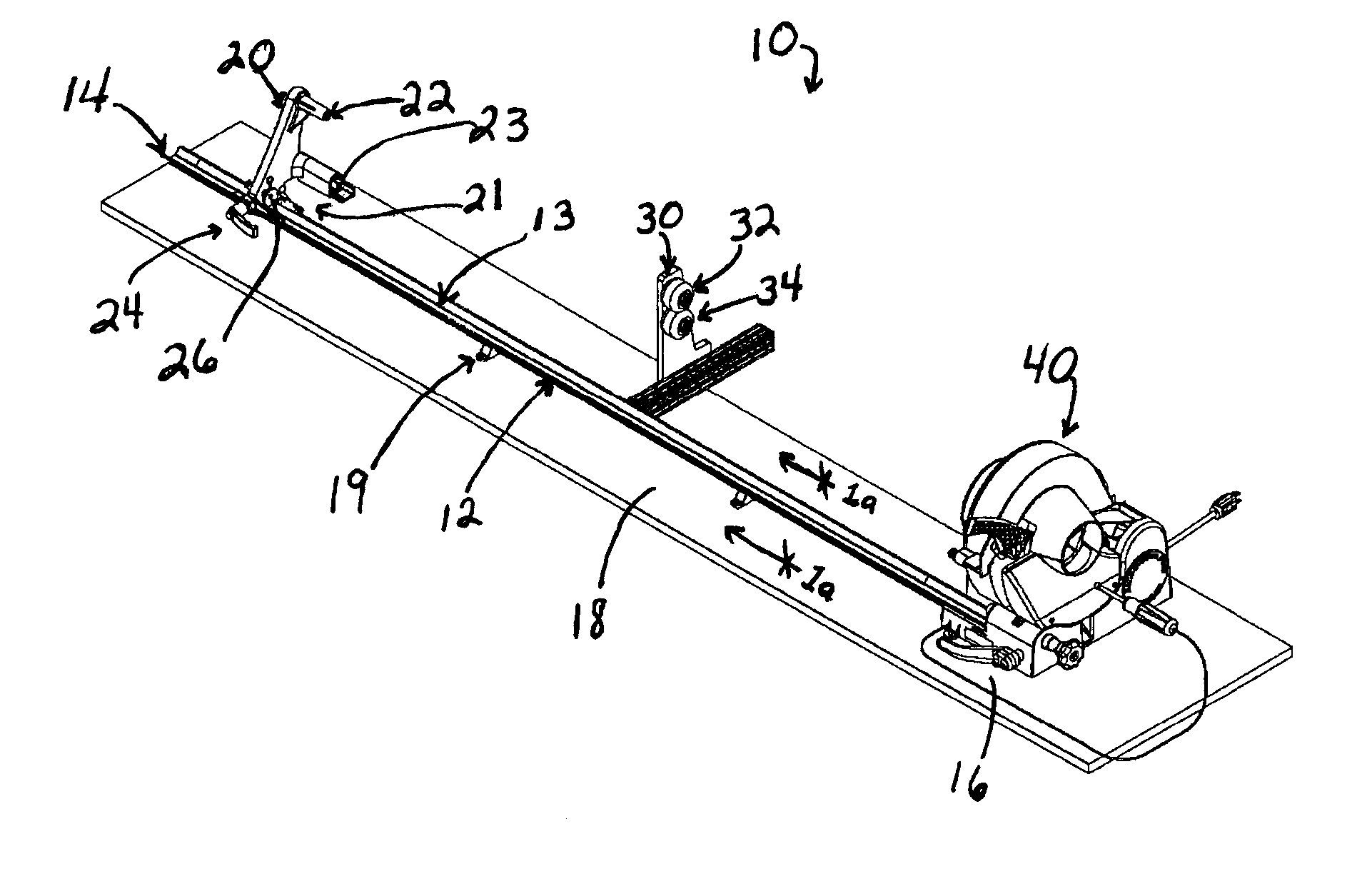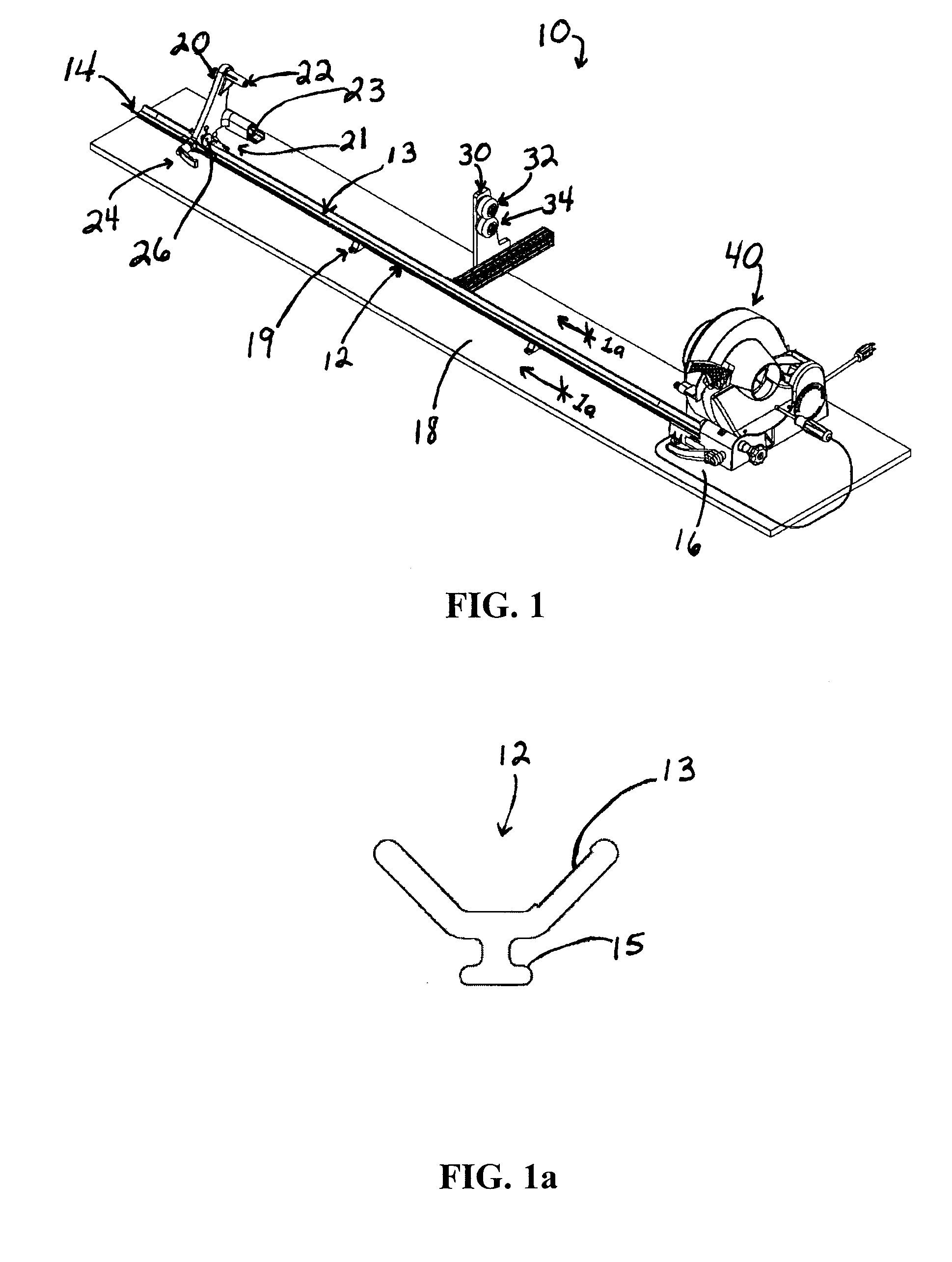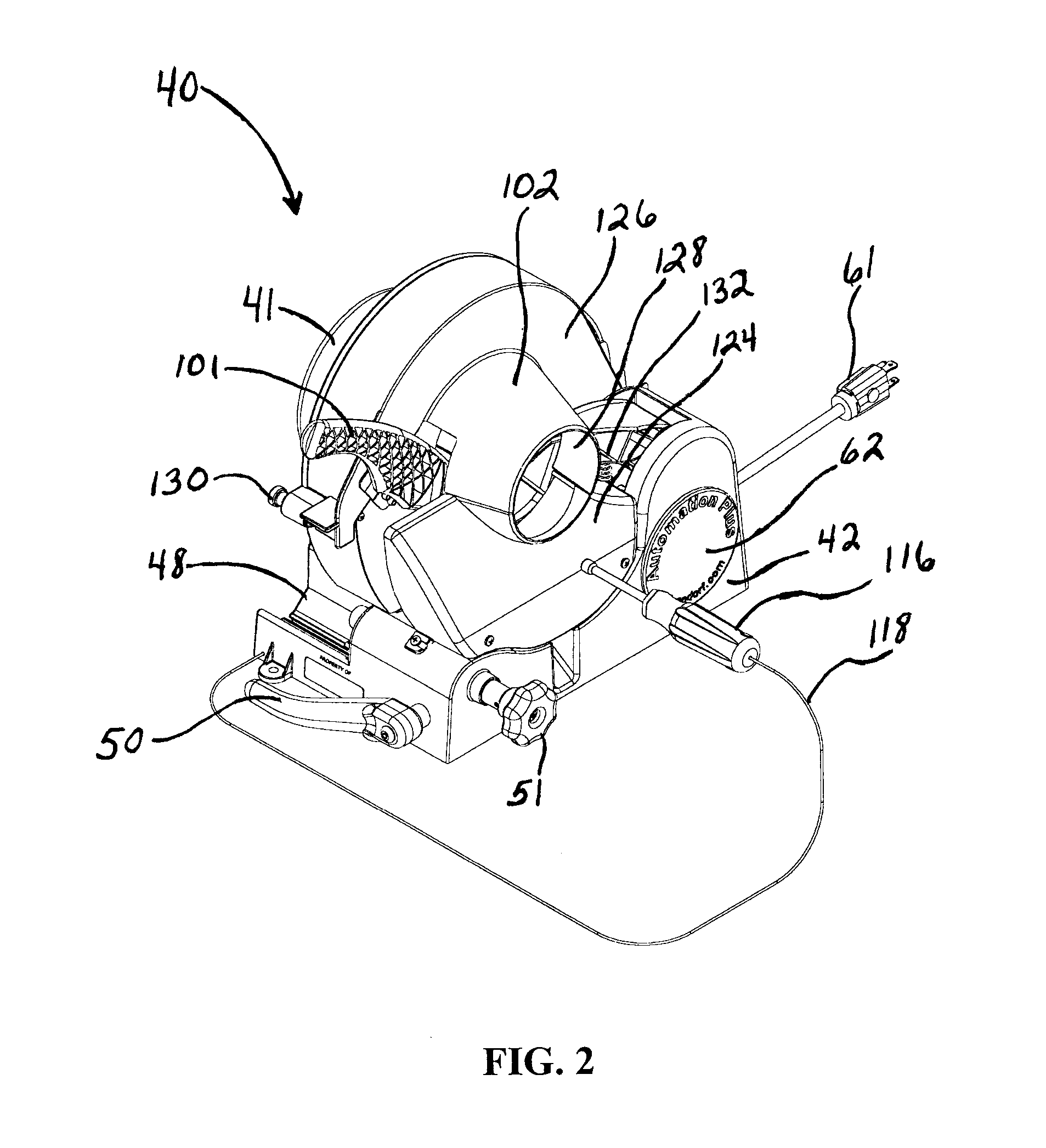Shade cutter
a cutting edge and shade technology, applied in the field of cutting edge shades, can solve the problems of safety problems, the opening of the shade cutter is typically too small, and the prior art cutting edge is not suitable for use, and achieves the effect of avoiding the risk of finger injury
- Summary
- Abstract
- Description
- Claims
- Application Information
AI Technical Summary
Benefits of technology
Problems solved by technology
Method used
Image
Examples
Embodiment Construction
[0032] Reference is now made to the figures for the following detailed description of the invention as described in the Summary.
[0033] As previously noted, and referring to FIG. 1, the shade cutter assembly device 10 comprises a shade support measuring rail 12 having a first end 14 and a second end 16. The shade cutter assembly device 10 is generally supported on a base 18 by supports 19.
[0034] Referring now to FIG. 1a, the rail 12 is configured in a V shape with a T-shaped base 15 on its dorsal side for positioning the rail 12 on the base 18 by means of shade support brackets 19. The base 18 can be made of any of a number of materials, including wood, plywood, plastic, metal or other types of extruded board material. It is also within the scope of the present invention to position the shade cutter assembly device 10 directly on an existing bench or table.
[0035] As illustrated in FIG. 1a, a shallow slot 13 extends the length of the rail 12. The slot is ideally suited for the opti...
PUM
| Property | Measurement | Unit |
|---|---|---|
| Length | aaaaa | aaaaa |
Abstract
Description
Claims
Application Information
 Login to View More
Login to View More - R&D
- Intellectual Property
- Life Sciences
- Materials
- Tech Scout
- Unparalleled Data Quality
- Higher Quality Content
- 60% Fewer Hallucinations
Browse by: Latest US Patents, China's latest patents, Technical Efficacy Thesaurus, Application Domain, Technology Topic, Popular Technical Reports.
© 2025 PatSnap. All rights reserved.Legal|Privacy policy|Modern Slavery Act Transparency Statement|Sitemap|About US| Contact US: help@patsnap.com



